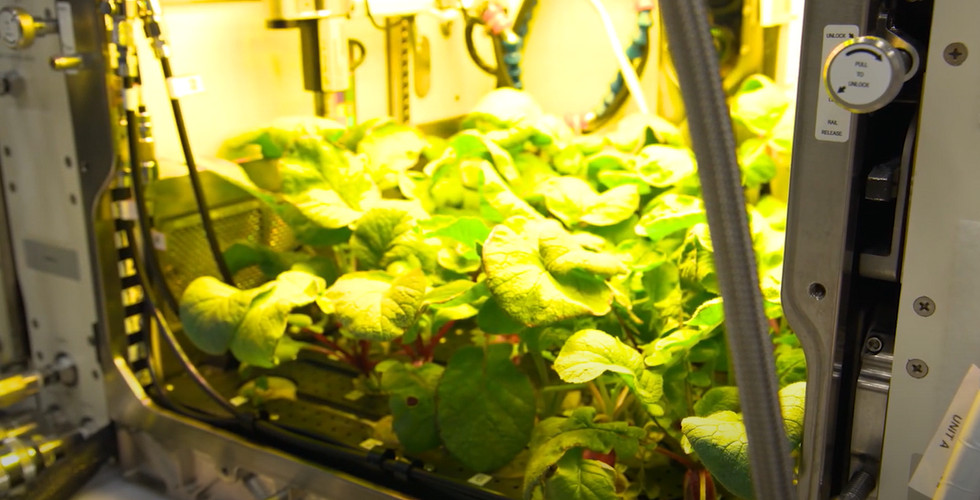Radishes in space
- Prisca
- Dec 10, 2020
- 2 min read
A new "plants in space" project was recently launched by NASA: Plant Habitat-02 (PH-02). It aims to study the growth of radishes in the International Space Station’s fully automated plant growth chamber, also called "Advanced Plant Habitat”.

Why is NASA growing plants in space?
NASA is researching plant cultivation for long-duration space flights. Due to limited amount of room and weight, it'll be impossible to carry all necessary nourishments for missions lasting months or even years. Thus astronauts have to grow their own food.
Next to providing food, plants will increase the physical and mental well-being of astronauts in long missions far from home (see my previous article: indoor plants and happiness).
Why radishes?
Radishes are both nutritious and edible and thus ideal to study their development in the specialized growth chamber on the ISS. Additionally, radishes have a short cultivation period: it takes 22 – 70 days for the plants to come to harvest. Radishes are also small: about 20 plants can grow in the growth chamber at the same time. Radishes are genetically close to Arabidopsis (commonly called thale cress), a model plant used in scientific research already for decades. Arabidopsis plants were previously grown in the growth chamber (experiment PH-01).
The growth chamber: Advanced Plant Habitat
Advanced Plant Habitat is a fully enclosed growth chamber and only requires minimal input from the crew members. Light is supplied by red, blue, green, broad-spectrum white and far-red LED lamps. Nutrients, water, and oxygen will directly be delivered to the roots of the plants. The growth chamber possesses an active watering system, meaning that water will be provided when sensors detect its necessity. Additionally, the specialized growth chamber possesses an active temperature control system that adapts the temperature inside the growth chamber with an accuracy of +/- 0.5 °C.
To monitor the well-being of the plants, the growth chamber is equipped with over 180 sensors measuring e.g. temperature, oxygen level, carbon dioxide level, air and soil moisture, and light sensors that measure light intensity and spectral quality. While the Advanced Plant Habitat will be activated manually by astronauts on the ISS, it will be controlled by the team at the Kennedy Space Center in Florida.
Sources:
Morrow, R et al. (2016, July). A new plant habitat facility for the ISS. 46th International Conference on Environmental Systems.












Comments